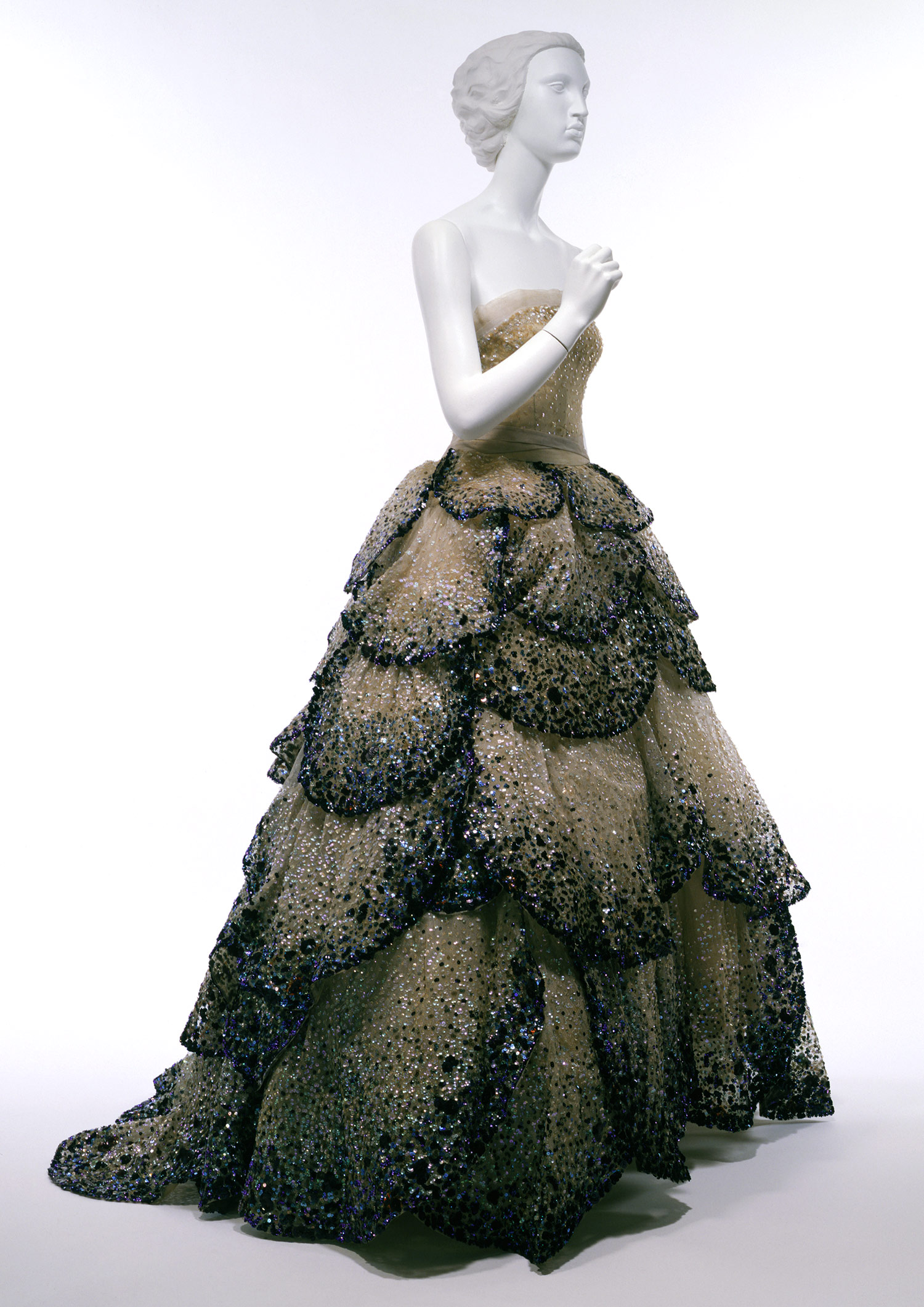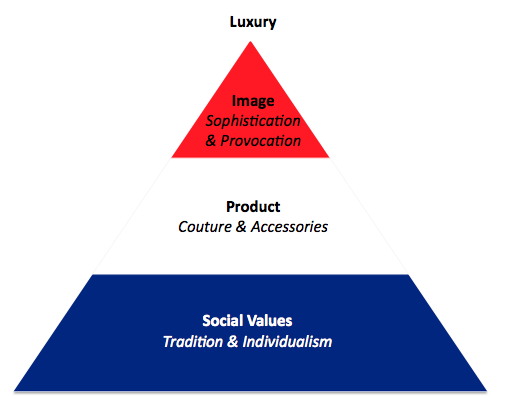The YSL brand, like Dior, also moved from a single status to a member of a luxury conglomerate (this time PPR/Gucci Group), although the route taken was a bit different. We can learn from the bumps in the road on this one.
Read MoreDior & LVMH: The French Business Model for Fashion & Luxury
The business model that began as a single brand directed by one creative mind has become a model composed of a portfolio of complimentary luxury brands, exemplified by the evolution of Christian Dior & the ultimate luxury conglomerate: LVMH.
Read MoreThe French System for Fashion & Luxury
 French fashion has long been reflective of social and economic hierarchy, illuminating the distinction among classes. Beginning with the Royal Court of the Sun King, France became the capitol of rich fashion. After Charles Worth created the business of haute couture in the 1800s, Paris became the creative center for a business model that has evolved greatly, yet still remains centered around the spirit of haute couture.
French fashion has long been reflective of social and economic hierarchy, illuminating the distinction among classes. Beginning with the Royal Court of the Sun King, France became the capitol of rich fashion. After Charles Worth created the business of haute couture in the 1800s, Paris became the creative center for a business model that has evolved greatly, yet still remains centered around the spirit of haute couture.
What is Couture?
Haute couture is identified as unique pieces constructed with precious materials, made-to-measure, and made for special occasions- not daily wear. A dress of this nature today should run you on average between 20,000 and 30,000 euro and up.
According to French law as of 2008, the following points must be met for a fashion company to be considered a house of couture:
- the atelier must produce at least 50 garments per season by hand
- the atelier must employ at least 20 skilled in-house workers for production
Note: This model is changing under the current economic situation, in order to protect the existing haute couture legacy; too many couturiers were closing their doors under the weight of these expensive restrictions.
Where there were once more than 30,000 clients per year for the highest form of French fashion, today there remain less than 3,000, and most of these are irregular clients. Hence, haute couture is not a big business anymore; it is unaffordable and impractical, as there are fewer and fewer occasions in today's world to wear such items. It has become much less profitable than it once was, having lost the link with modern life.
 Most companies that made their name in haute couture today sell primarily accessible products and democratic accessories like lipstick, perfumes, and so on. However, to continue to sell these more "basic" goods at high profit margins, they must continue to produce high fashion. People are now buying the legacy of couture, rather than the couture itself. Therefore, to make the big bucks selling goods at the bottom, you must be positioned at the top.French companies based around haute couture lack a bottom-up business model, and have no second-lines: consider French powerhouses Dior and Chanel, as opposed to Armani, Ralph Lauren, Dolce & Gabbana, etc.
Most companies that made their name in haute couture today sell primarily accessible products and democratic accessories like lipstick, perfumes, and so on. However, to continue to sell these more "basic" goods at high profit margins, they must continue to produce high fashion. People are now buying the legacy of couture, rather than the couture itself. Therefore, to make the big bucks selling goods at the bottom, you must be positioned at the top.French companies based around haute couture lack a bottom-up business model, and have no second-lines: consider French powerhouses Dior and Chanel, as opposed to Armani, Ralph Lauren, Dolce & Gabbana, etc.
The Dream created by the haute couture collection is used to sell cheaper products from the same brand.
 Brand images and communications demonstrate a high level of arrogance and provocation, in order to build The Dream. Have you ever wondered how or why that "crazy stuff that nobody is ever going to buy" makes it onto the catwalk? The most elaborate and provocative designs are taken onto the runway because the goal is not to sell as many units as possible, but to demonstrate creativity and uniqueness, and generate buzz around the brand. Consider the wild boys Jean Paul Gaultier for Hermes, or John Galliano for Dior (below).
Brand images and communications demonstrate a high level of arrogance and provocation, in order to build The Dream. Have you ever wondered how or why that "crazy stuff that nobody is ever going to buy" makes it onto the catwalk? The most elaborate and provocative designs are taken onto the runway because the goal is not to sell as many units as possible, but to demonstrate creativity and uniqueness, and generate buzz around the brand. Consider the wild boys Jean Paul Gaultier for Hermes, or John Galliano for Dior (below).

The buzz-factor has become increasingly important for luxury fashion labels in recent years, especially in France where the namesake designers (Dior, Chanel, Vionnet, Yves Saint Laurent, etc) are no longer with us. In fact, most clients are unaware of the designers behind today's major labels. Instead, it is much more common to know which celebrities are wearing which labels (the Poiret legacy lives on!).
The French Fashion System
To summarize, the French business model is derived from a long tradition of craft and individualism... and marketing. Couture was the original product of the French fashion and luxury system, which was recently integrated with and then overtaken by accessories. The image of sophistication and provocation are used to produce the sense of luxury at the highest levels of the brand (through couture), which is what the companies are selling (through cosmetics and accessories). Viola!
- Couture = Image
- Accessories/Cosmetics = Sales
Here's my hastily-made visual (with apologies to France):

Fashion History: France After WW2... Dior Revolution
The geography of fashion has distant roots, and world capitols rely on a large accumulation of materials from around the world in order to grow. As a Nazi-occupied island, isolated from the rest of the world, Paris lost its monopoly on fashion, with competition growing stronger in New York, London and Italy. In order to recover, French ateliers returned to the haute-couture stage, but with innovative cooperation between the fashion and textile industries.
Read More